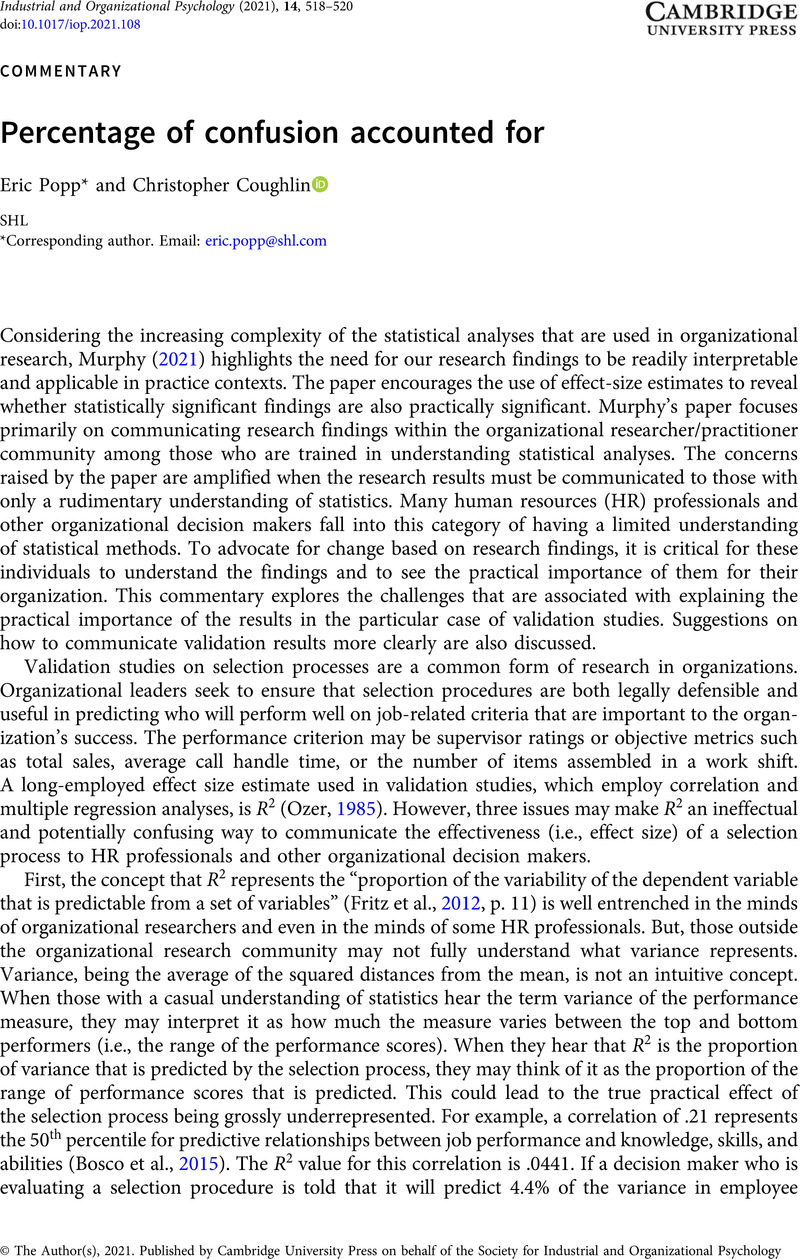No CrossRef data available.
Article contents
Percentage of confusion accounted for
Published online by Cambridge University Press: 14 December 2021
Abstract
An abstract is not available for this content so a preview has been provided. Please use the Get access link above for information on how to access this content.

- Type
- Commentaries
- Information
- Copyright
- © The Author(s), 2021. Published by Cambridge University Press on behalf of the Society for Industrial and Organizational Psychology
References
American Psychological Association. (2020). Publication manual of the American Psychological Association. American Psychological Association.Google Scholar
Bosco, F. A., Aguinis, H., Singh, K., Field, J. G., & Pierce, C. A. (2015). Correlational effect size benchmarks. Journal of Applied Psychology, 100(2), 431–449. https://doi.org/10.1037/a0038047
CrossRefGoogle ScholarPubMed
Cucina, J., Berger, J., & Busciglio, H. (2017). Communicating criterion-related validity using expectancy charts: Anew approach. Personnel Assessment and Decisions, 3(1), Article 1. https://doi:10.25035/pad.2017.001
CrossRefGoogle Scholar
Fritz, C. O., Morris, P. E., & Richler, J. J. (2012). Effect size estimates: Current use, calculations, and interpretation. Journal of Experimental Psychology: General, 141(1), 2–18. https://doi.org/10.1037/a0024338
CrossRefGoogle ScholarPubMed
Latham, G. (2007). A speculative perspective on the transfer of behavioral science findings to the workplace: “The times they are a-changin’.” Academy of Management Journal, 50, 1027–1032. https://doi.org/10.5465/amj.2007.27153899
CrossRefGoogle Scholar
Murphy, K. R. (2021). In praise of table 1: The importance of making better use of descriptive statistics. Industrial and Organizational Psychology: Perspectives on Science and Practice, 14(4), 461–477.Google Scholar
Ozer, D. J. (1985). Correlation and the coefficient of determination. Psychological Bulletin, 97(2), 307–315. https://doi.org/10.1037/0033-2909.97.2.307
CrossRefGoogle Scholar
Winkler, S., König, C. J., & Kleinmann, M. (2010). Single-attribute utility analysis may be futile, but this can’t be the end of the story: Causal chain analysis as an alternative. Personnel Psychology, 63(4), 1041–1065. https://doi.org/10.1111/j.1744-6570.2010.01197.x
CrossRefGoogle Scholar




